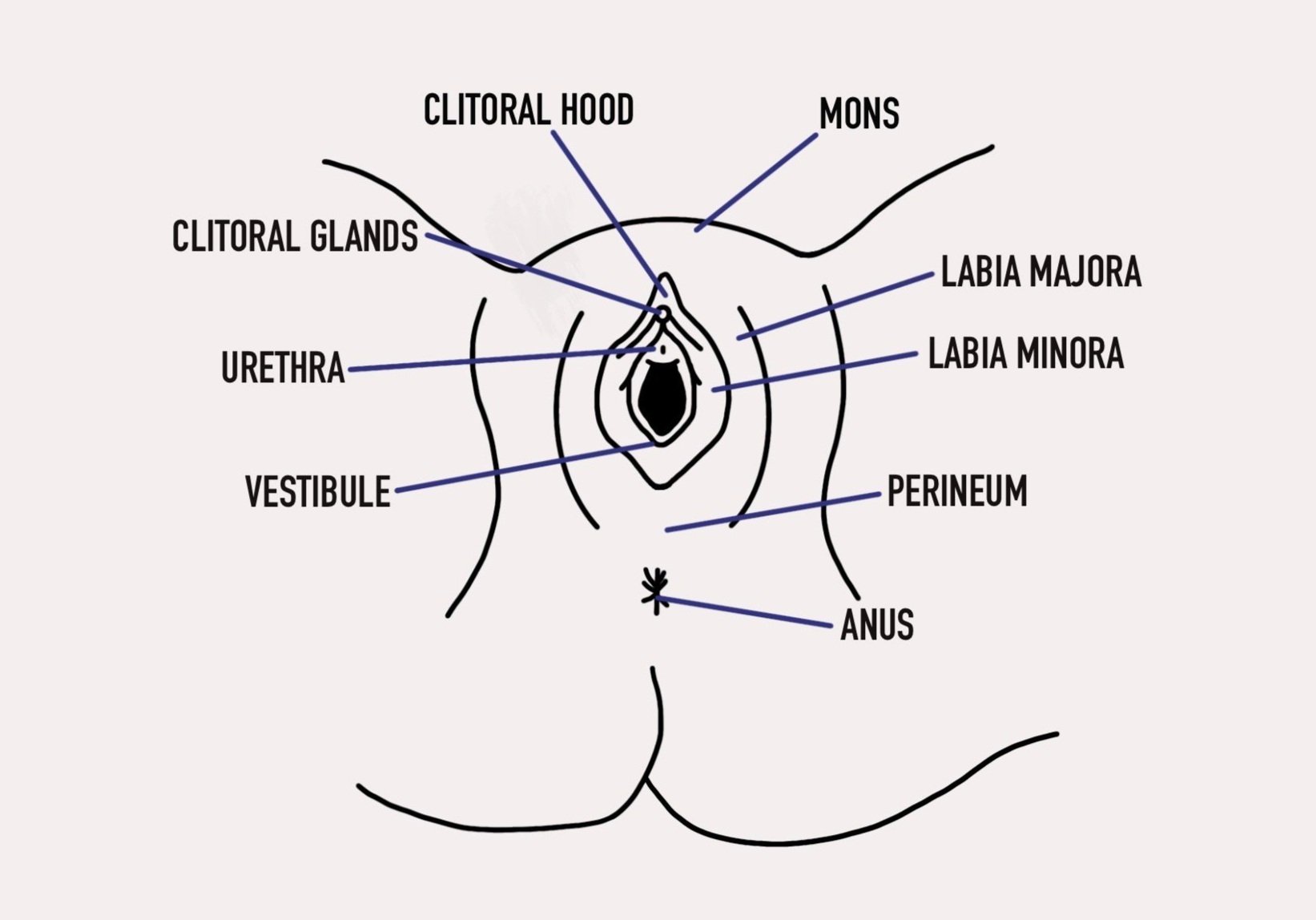Pelvic Anatomy 101: Do You REALLY Know What a Vagina Is?
What is your pelvic floor? What is the vulva? What really is the vagina? These are questions that many cis-women have about their anatomy. And this blog is going to help clear things up!
Let’s start by looking at our external anatomy…
VULVA VS VAGINA
This is one of the most common confusions regarding female anatomy. The vulva is the external part of the lower genital tract, any of the areas where your underwear can touch your skin. The vagina is the internal part, the tube of muscle that connects the vulva to the cervix. The area between the vulva and vagina is called the vestibule.
The vulva comprises the following structures (refer to below image):
Mons
Labia major and minora
Clitoris (hood and glans)
Vestibule
Urethral opening
Perineum
Each individual vulva looks different, there is no “standard” normal. The clitoris, labia major and labia minora can all be different shapes and sizes. The labia may not be symmetrical to each other. This is all normal!
PELVIC FLOOR FUNCTION
Now that we have labelled all our external structures, we should talk about the function of our pelvic floor. As you can see in the below image, our pelvic floor is made up of several muscles! Our pelvic floor carries out many important functions for our body:
SUPPORT: our pelvic floor muscles support our organs against gravity and intra-abdominal pressure
SPHINCTERIC: the pelvic floor muscles control the urethral, vaginal and rectal openings – which helps us maintain urinary and fecal continence
SEXUAL: the muscles of the pelvic floor provide tone to the vaginal and rectal canal, provide blood flow and lubrication AND their quick contractions allow for orgasms
STABILITY: in addition to supporting our organs, the pelvic floor muscles provide stability for our pelvis, hips and lumbar spine
SUMP-PUMP: our pelvic floor is a key area for lymphatic and venous drainage in our body
Reference: MJ Forget Pelvic Floor Model
Our pelvic floor typically carries out all of these functions without us needing to consciously pay attention to it. But, when pelvic floor dysfunction occurs it is important that we are able to control our pelvic floor muscles so that we can address the dysfunction and improve any symptoms. To learn more about WHY you may need a pelvic floor assessment, check out this blog post.
This post was written by wellbe’s pelvic floor physiotherapists Amber Watkins & Teresa Luu. Click here to learn more about how pelvic floor physiotherapy can help and to book your first session.



